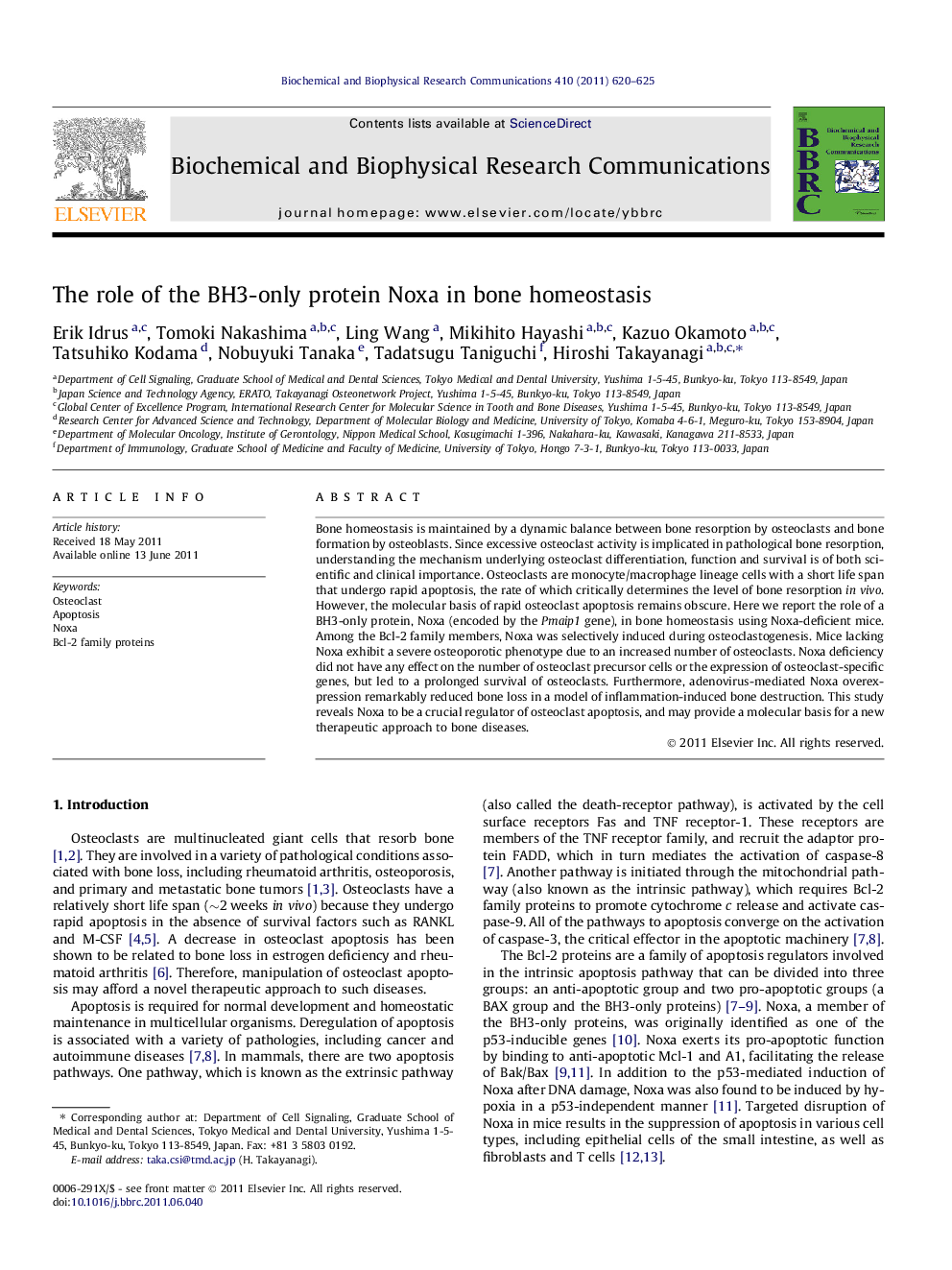| کد مقاله | کد نشریه | سال انتشار | مقاله انگلیسی | نسخه تمام متن |
|---|---|---|---|---|
| 1930544 | 1050517 | 2011 | 6 صفحه PDF | دانلود رایگان |

Bone homeostasis is maintained by a dynamic balance between bone resorption by osteoclasts and bone formation by osteoblasts. Since excessive osteoclast activity is implicated in pathological bone resorption, understanding the mechanism underlying osteoclast differentiation, function and survival is of both scientific and clinical importance. Osteoclasts are monocyte/macrophage lineage cells with a short life span that undergo rapid apoptosis, the rate of which critically determines the level of bone resorption in vivo. However, the molecular basis of rapid osteoclast apoptosis remains obscure. Here we report the role of a BH3-only protein, Noxa (encoded by the Pmaip1 gene), in bone homeostasis using Noxa-deficient mice. Among the Bcl-2 family members, Noxa was selectively induced during osteoclastogenesis. Mice lacking Noxa exhibit a severe osteoporotic phenotype due to an increased number of osteoclasts. Noxa deficiency did not have any effect on the number of osteoclast precursor cells or the expression of osteoclast-specific genes, but led to a prolonged survival of osteoclasts. Furthermore, adenovirus-mediated Noxa overexpression remarkably reduced bone loss in a model of inflammation-induced bone destruction. This study reveals Noxa to be a crucial regulator of osteoclast apoptosis, and may provide a molecular basis for a new therapeutic approach to bone diseases.
► Noxa is highly induced by RANKL during osteoclast maturation.
► Noxa-deficient mice exhibit an osteoporotic phenotype.
► Noxa deficiency results in an increased number of osteoclasts with normal activity.
► Noxa plays a key role in rapid osteoclast apoptosis.
► Noxa overexpression ameliorated inflammation-induced bone loss.
Journal: Biochemical and Biophysical Research Communications - Volume 410, Issue 3, 8 July 2011, Pages 620–625